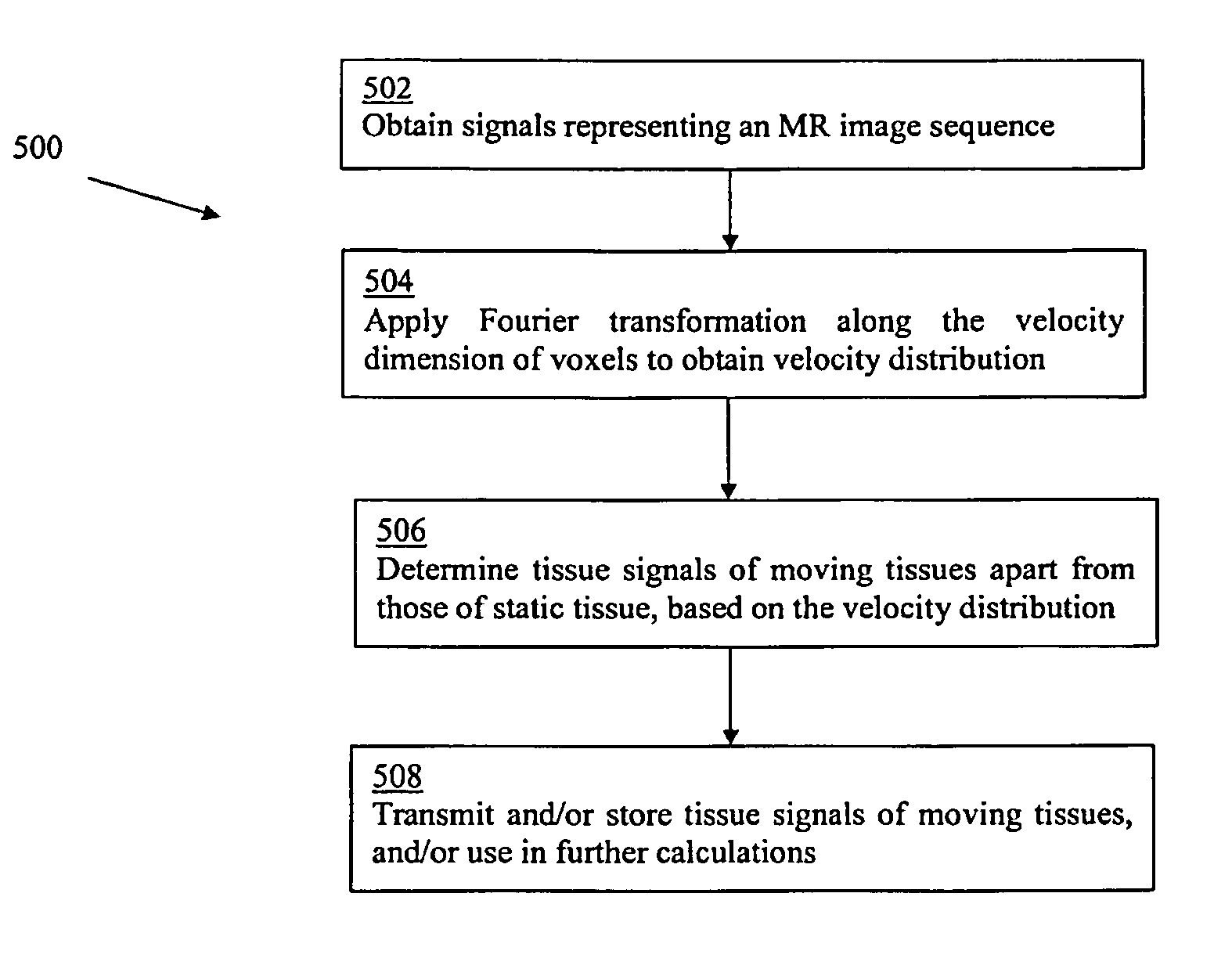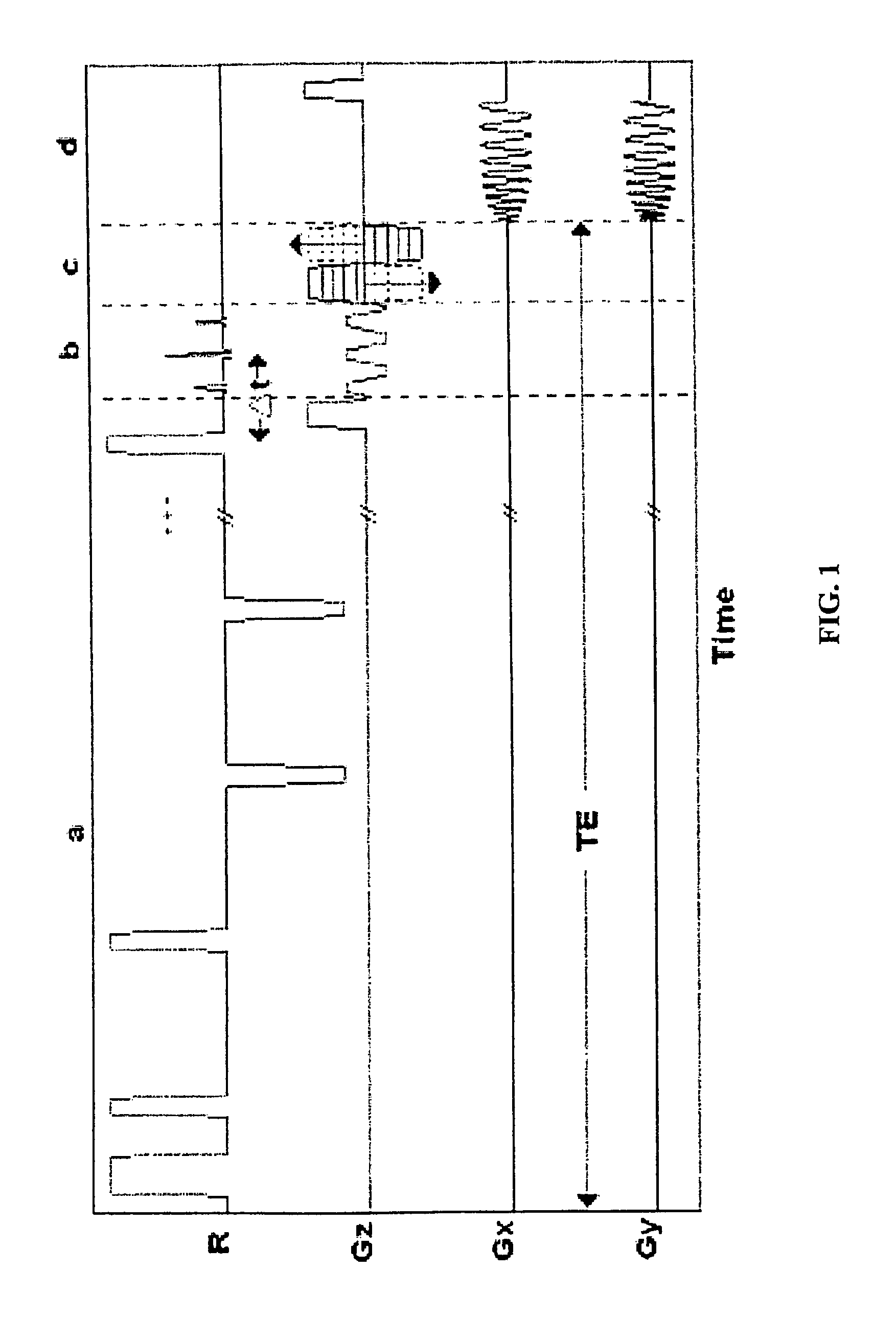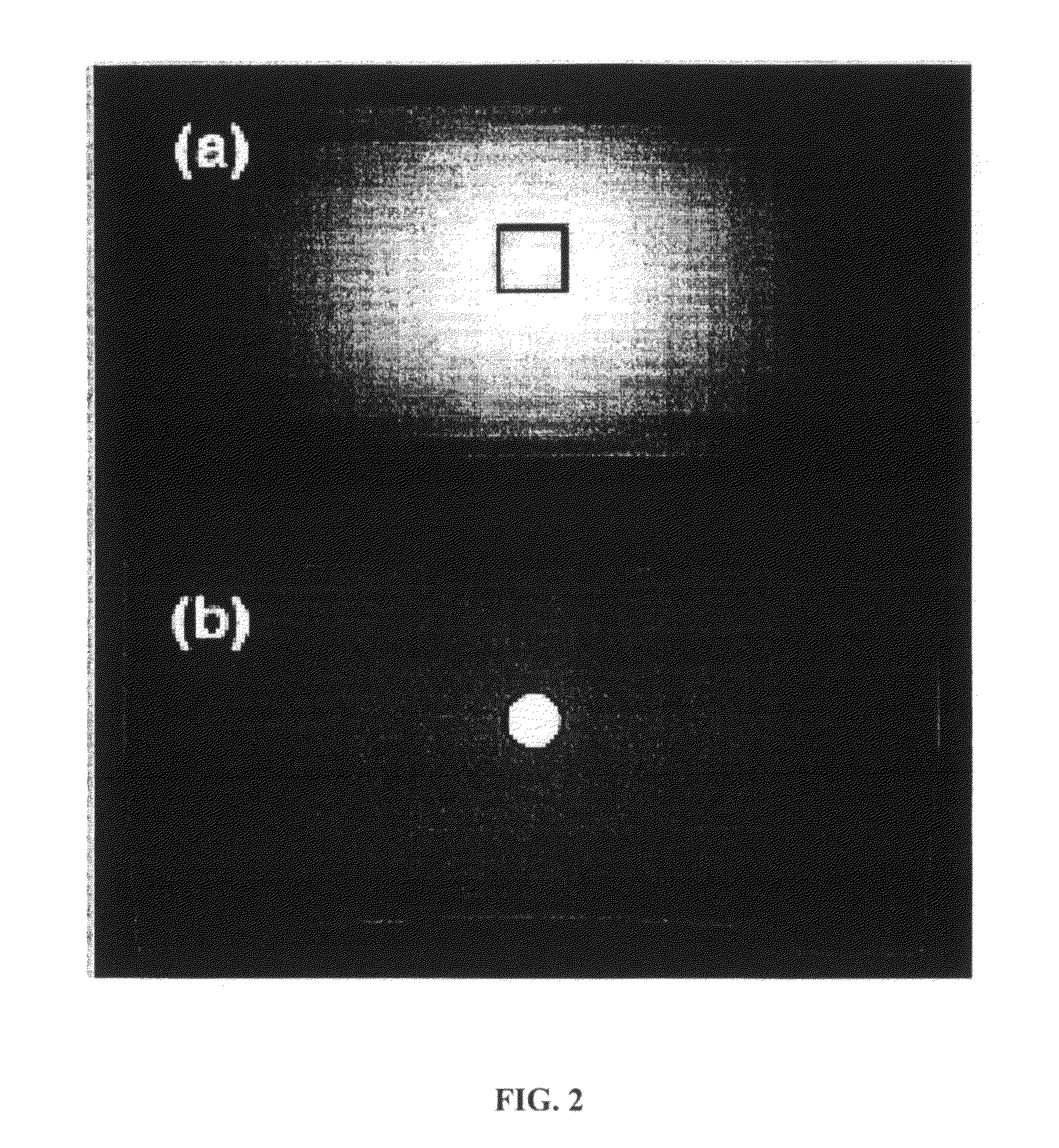Magnetic resonance-based method and system for determination of oxygen saturation in flowing blood
a magnetic resonance and blood flow technology, applied in the field of magnetic resonance techniques for differentiation of tissue signals, can solve the problems of low spatial resolution, affecting measurement accuracy, and particularly challenging, and achieve the effect of improving spatial resolution and overcomplicating partial volume effects
- Summary
- Abstract
- Description
- Claims
- Application Information
AI Technical Summary
Benefits of technology
Problems solved by technology
Method used
Image
Examples
examples
[0056]Examples of the disclosed method and system are now described. These examples are provided for the purpose of illustration only and are not intended to be limiting.
[0057]In one example, an example of the disclosed method and system is used to calculate T2 and oxygen saturation in a phantom. The disclosed method is compared with a conventional method.
[0058]In the phantom, to mimic blood flowing in a vessel, water was pumped through a thin-walled (e.g., thickness=0.5 mm) latex tube at a constant flow rate by a computer-controlled gear pump. The tube was immersed in a water bath to mimic static tissue surrounding the vessel and a contrast agent, in this example gadopentetate dimeglumine (e.g., Magnevist™, Berlex, Canada) was used to adjust the tubing and bath T2 values to represent arterial blood and tissue, respectively. Imaging was performed on a 1.5 T MR system (GE Healthcare, USA) using the body coil.
[0059]To consider the suitability of the disclosed method in the presence of...
PUM
 Login to View More
Login to View More Abstract
Description
Claims
Application Information
 Login to View More
Login to View More - R&D
- Intellectual Property
- Life Sciences
- Materials
- Tech Scout
- Unparalleled Data Quality
- Higher Quality Content
- 60% Fewer Hallucinations
Browse by: Latest US Patents, China's latest patents, Technical Efficacy Thesaurus, Application Domain, Technology Topic, Popular Technical Reports.
© 2025 PatSnap. All rights reserved.Legal|Privacy policy|Modern Slavery Act Transparency Statement|Sitemap|About US| Contact US: help@patsnap.com



